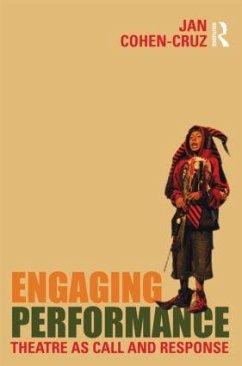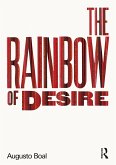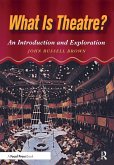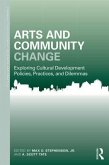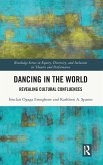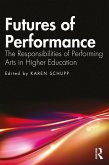- Broschiertes Buch
- Merkliste
- Auf die Merkliste
- Bewerten Bewerten
- Teilen
- Produkt teilen
- Produkterinnerung
- Produkterinnerung
Presents a combined analysis to examine 'socially engaged performance'. This title offers a range of key practical approaches, exercises, and principles for using performance to engage in a variety of social and artistic projects.
Andere Kunden interessierten sich auch für
![Boal Companion Boal Companion]() Jan Cohen-Cruz / Mady Schutzman (eds.)Boal Companion188,99 €
Jan Cohen-Cruz / Mady Schutzman (eds.)Boal Companion188,99 €![The Rainbow of Desire The Rainbow of Desire]() Augusto BoalThe Rainbow of Desire53,99 €
Augusto BoalThe Rainbow of Desire53,99 €![What is Theatre? What is Theatre?]() John BrownWhat is Theatre?94,99 €
John BrownWhat is Theatre?94,99 €![Arts and Community Change Arts and Community Change]() Arts and Community Change66,99 €
Arts and Community Change66,99 €![Dancing in the World Dancing in the World]() Sinclair Ogaga EmogheneDancing in the World55,99 €
Sinclair Ogaga EmogheneDancing in the World55,99 €![Dancing in the World Dancing in the World]() Sinclair Ogaga EmogheneDancing in the World137,99 €
Sinclair Ogaga EmogheneDancing in the World137,99 €![Futures of Performance Futures of Performance]() Futures of Performance50,99 €
Futures of Performance50,99 €-
-
-
Presents a combined analysis to examine 'socially engaged performance'. This title offers a range of key practical approaches, exercises, and principles for using performance to engage in a variety of social and artistic projects.
Produktdetails
- Produktdetails
- Verlag: Taylor & Francis Ltd
- Seitenzahl: 244
- Erscheinungstermin: 21. Juli 2010
- Englisch
- Abmessung: 234mm x 156mm x 14mm
- Gewicht: 384g
- ISBN-13: 9780415472142
- ISBN-10: 0415472148
- Artikelnr.: 29246824
- Herstellerkennzeichnung
- Libri GmbH
- Europaallee 1
- 36244 Bad Hersfeld
- gpsr@libri.de
- Verlag: Taylor & Francis Ltd
- Seitenzahl: 244
- Erscheinungstermin: 21. Juli 2010
- Englisch
- Abmessung: 234mm x 156mm x 14mm
- Gewicht: 384g
- ISBN-13: 9780415472142
- ISBN-10: 0415472148
- Artikelnr.: 29246824
- Herstellerkennzeichnung
- Libri GmbH
- Europaallee 1
- 36244 Bad Hersfeld
- gpsr@libri.de
Jan Cohen-Cruz is director of Imagining America: Artists and Scholars in Public Life. She is the author of Local Acts: Community Performance in the US; the editor of Radical Street Performance; co-editor, with Mady Schutzman, of Playing Boal: Theatre, Therapy, Activism and A Boal Companion ; and a University Professor at Syracuse University.
Introduction Kinship among Engaged Performance Practices Purposes for
Writing this Book Book Organization: Centers of Gravity of Engaged
Performance Chapter 1. Playwrighting: Putting Plays to Use 1.1 Brecht's
Intellectually Active Spectator 1.2Kushner's Magical Epic Theatre Angels in
the Context of a Social Movement The Post-Social Movement Life of Angels
1.3 Community-Informed Adaptations 1.4 The Unfaithful Disciple 1.5
Workbook: Situating Plays for Social Engagement Chapter 2. Specta(c)ting:
Theatre of the Oppressed, Orthodoxy and Adaptation 2.1 The System of
Theatre of the Oppressed 2.2 Adapting Boal 2.3 Semi-Invisible Theatre:
Magic That Mystifies and Reveals 2.4 The Joker System as Pedagogy and
Performance 2.5 The Spirit of Boal in the Bronx 2.6 Activating the
Specta(c)tor 2.7 Workbook: Boal's Theatre of the Oppressed Techniques Ch 3.
Self-Representing: Testimonial Performance 3.1 Social Call, Cultural
Response 3.2 The Testimonial Process 3.3 Cultural Democracy and
Self-Representation 3.4 home land security as a Testimonial Performance
3.5 From Self-Representation to Community Action 3.6 Workbook: Interviewing
and Story Circles Ch 4. Cultural Organizing: Multiple Modes of
Communication 4.1 Creating Cultural Organizing Tools 4.2 Theorizing Culture
as Political Strategy 4.3 Integrating Artists and Activists 4.4 Workbook:
The Creation of Scripts from Stories and Interviews Ch 5. Gathering Assets:
the Art of Local Resources 5.1 The Choice: Top Down or Bottom Up 5.2 Social
Capital and Asset-Based Community Organizing 5.3 The Youth Theatre
Workshop: Adapting Method to Context 5.4 The Art of Cultural Resources 5.5
Workbook: Facilitating Theatre Workshops Ch 6. Particularizing Place:
Revitalizing Cities and Neighborhoods 6.1 Revitalizing Downtowns 6.2 The
Urban Video Project 6.3 Towards a Participatory Performance Spectacle 6.4
Revitalizing Urban Neighborhoods 6.5 Efforts to Create an Arts District 6.6
Art and Community Building 6.7 The Arts' Contribution to Urban Development
6.8 Workbook: Making Site-Specific Performance Ch 7. Training: An Engaged
Artist Prepares 7.1 The Dynamic Triangle of a Socially-Engaged Arts
Curriculum 7.2 Craft Training 7.3 Scholarship in an Engaged Art Education
7.4 Community Engagement as a Component of Learning 7.5 Values and
Principles Underlying Training 7.6 Higher Education as the Site of Engaged
Art Pedagogy Advantages of Learning Engaged Art in Higher Education
Obstacles to Situating Engaged Art Training in Higher Education 7.7
Assessing Engaged Art Education 7.8 The Curriculum Project Interviewees 7.9
Workbook: Beginning Engaged Art Partnerships Afterword: The Centrality of
Relationships in Engaging Performance Appendix
Writing this Book Book Organization: Centers of Gravity of Engaged
Performance Chapter 1. Playwrighting: Putting Plays to Use 1.1 Brecht's
Intellectually Active Spectator 1.2Kushner's Magical Epic Theatre Angels in
the Context of a Social Movement The Post-Social Movement Life of Angels
1.3 Community-Informed Adaptations 1.4 The Unfaithful Disciple 1.5
Workbook: Situating Plays for Social Engagement Chapter 2. Specta(c)ting:
Theatre of the Oppressed, Orthodoxy and Adaptation 2.1 The System of
Theatre of the Oppressed 2.2 Adapting Boal 2.3 Semi-Invisible Theatre:
Magic That Mystifies and Reveals 2.4 The Joker System as Pedagogy and
Performance 2.5 The Spirit of Boal in the Bronx 2.6 Activating the
Specta(c)tor 2.7 Workbook: Boal's Theatre of the Oppressed Techniques Ch 3.
Self-Representing: Testimonial Performance 3.1 Social Call, Cultural
Response 3.2 The Testimonial Process 3.3 Cultural Democracy and
Self-Representation 3.4 home land security as a Testimonial Performance
3.5 From Self-Representation to Community Action 3.6 Workbook: Interviewing
and Story Circles Ch 4. Cultural Organizing: Multiple Modes of
Communication 4.1 Creating Cultural Organizing Tools 4.2 Theorizing Culture
as Political Strategy 4.3 Integrating Artists and Activists 4.4 Workbook:
The Creation of Scripts from Stories and Interviews Ch 5. Gathering Assets:
the Art of Local Resources 5.1 The Choice: Top Down or Bottom Up 5.2 Social
Capital and Asset-Based Community Organizing 5.3 The Youth Theatre
Workshop: Adapting Method to Context 5.4 The Art of Cultural Resources 5.5
Workbook: Facilitating Theatre Workshops Ch 6. Particularizing Place:
Revitalizing Cities and Neighborhoods 6.1 Revitalizing Downtowns 6.2 The
Urban Video Project 6.3 Towards a Participatory Performance Spectacle 6.4
Revitalizing Urban Neighborhoods 6.5 Efforts to Create an Arts District 6.6
Art and Community Building 6.7 The Arts' Contribution to Urban Development
6.8 Workbook: Making Site-Specific Performance Ch 7. Training: An Engaged
Artist Prepares 7.1 The Dynamic Triangle of a Socially-Engaged Arts
Curriculum 7.2 Craft Training 7.3 Scholarship in an Engaged Art Education
7.4 Community Engagement as a Component of Learning 7.5 Values and
Principles Underlying Training 7.6 Higher Education as the Site of Engaged
Art Pedagogy Advantages of Learning Engaged Art in Higher Education
Obstacles to Situating Engaged Art Training in Higher Education 7.7
Assessing Engaged Art Education 7.8 The Curriculum Project Interviewees 7.9
Workbook: Beginning Engaged Art Partnerships Afterword: The Centrality of
Relationships in Engaging Performance Appendix
Introduction Kinship among Engaged Performance Practices Purposes for
Writing this Book Book Organization: Centers of Gravity of Engaged
Performance Chapter 1. Playwrighting: Putting Plays to Use 1.1 Brecht's
Intellectually Active Spectator 1.2Kushner's Magical Epic Theatre Angels in
the Context of a Social Movement The Post-Social Movement Life of Angels
1.3 Community-Informed Adaptations 1.4 The Unfaithful Disciple 1.5
Workbook: Situating Plays for Social Engagement Chapter 2. Specta(c)ting:
Theatre of the Oppressed, Orthodoxy and Adaptation 2.1 The System of
Theatre of the Oppressed 2.2 Adapting Boal 2.3 Semi-Invisible Theatre:
Magic That Mystifies and Reveals 2.4 The Joker System as Pedagogy and
Performance 2.5 The Spirit of Boal in the Bronx 2.6 Activating the
Specta(c)tor 2.7 Workbook: Boal's Theatre of the Oppressed Techniques Ch 3.
Self-Representing: Testimonial Performance 3.1 Social Call, Cultural
Response 3.2 The Testimonial Process 3.3 Cultural Democracy and
Self-Representation 3.4 home land security as a Testimonial Performance
3.5 From Self-Representation to Community Action 3.6 Workbook: Interviewing
and Story Circles Ch 4. Cultural Organizing: Multiple Modes of
Communication 4.1 Creating Cultural Organizing Tools 4.2 Theorizing Culture
as Political Strategy 4.3 Integrating Artists and Activists 4.4 Workbook:
The Creation of Scripts from Stories and Interviews Ch 5. Gathering Assets:
the Art of Local Resources 5.1 The Choice: Top Down or Bottom Up 5.2 Social
Capital and Asset-Based Community Organizing 5.3 The Youth Theatre
Workshop: Adapting Method to Context 5.4 The Art of Cultural Resources 5.5
Workbook: Facilitating Theatre Workshops Ch 6. Particularizing Place:
Revitalizing Cities and Neighborhoods 6.1 Revitalizing Downtowns 6.2 The
Urban Video Project 6.3 Towards a Participatory Performance Spectacle 6.4
Revitalizing Urban Neighborhoods 6.5 Efforts to Create an Arts District 6.6
Art and Community Building 6.7 The Arts' Contribution to Urban Development
6.8 Workbook: Making Site-Specific Performance Ch 7. Training: An Engaged
Artist Prepares 7.1 The Dynamic Triangle of a Socially-Engaged Arts
Curriculum 7.2 Craft Training 7.3 Scholarship in an Engaged Art Education
7.4 Community Engagement as a Component of Learning 7.5 Values and
Principles Underlying Training 7.6 Higher Education as the Site of Engaged
Art Pedagogy Advantages of Learning Engaged Art in Higher Education
Obstacles to Situating Engaged Art Training in Higher Education 7.7
Assessing Engaged Art Education 7.8 The Curriculum Project Interviewees 7.9
Workbook: Beginning Engaged Art Partnerships Afterword: The Centrality of
Relationships in Engaging Performance Appendix
Writing this Book Book Organization: Centers of Gravity of Engaged
Performance Chapter 1. Playwrighting: Putting Plays to Use 1.1 Brecht's
Intellectually Active Spectator 1.2Kushner's Magical Epic Theatre Angels in
the Context of a Social Movement The Post-Social Movement Life of Angels
1.3 Community-Informed Adaptations 1.4 The Unfaithful Disciple 1.5
Workbook: Situating Plays for Social Engagement Chapter 2. Specta(c)ting:
Theatre of the Oppressed, Orthodoxy and Adaptation 2.1 The System of
Theatre of the Oppressed 2.2 Adapting Boal 2.3 Semi-Invisible Theatre:
Magic That Mystifies and Reveals 2.4 The Joker System as Pedagogy and
Performance 2.5 The Spirit of Boal in the Bronx 2.6 Activating the
Specta(c)tor 2.7 Workbook: Boal's Theatre of the Oppressed Techniques Ch 3.
Self-Representing: Testimonial Performance 3.1 Social Call, Cultural
Response 3.2 The Testimonial Process 3.3 Cultural Democracy and
Self-Representation 3.4 home land security as a Testimonial Performance
3.5 From Self-Representation to Community Action 3.6 Workbook: Interviewing
and Story Circles Ch 4. Cultural Organizing: Multiple Modes of
Communication 4.1 Creating Cultural Organizing Tools 4.2 Theorizing Culture
as Political Strategy 4.3 Integrating Artists and Activists 4.4 Workbook:
The Creation of Scripts from Stories and Interviews Ch 5. Gathering Assets:
the Art of Local Resources 5.1 The Choice: Top Down or Bottom Up 5.2 Social
Capital and Asset-Based Community Organizing 5.3 The Youth Theatre
Workshop: Adapting Method to Context 5.4 The Art of Cultural Resources 5.5
Workbook: Facilitating Theatre Workshops Ch 6. Particularizing Place:
Revitalizing Cities and Neighborhoods 6.1 Revitalizing Downtowns 6.2 The
Urban Video Project 6.3 Towards a Participatory Performance Spectacle 6.4
Revitalizing Urban Neighborhoods 6.5 Efforts to Create an Arts District 6.6
Art and Community Building 6.7 The Arts' Contribution to Urban Development
6.8 Workbook: Making Site-Specific Performance Ch 7. Training: An Engaged
Artist Prepares 7.1 The Dynamic Triangle of a Socially-Engaged Arts
Curriculum 7.2 Craft Training 7.3 Scholarship in an Engaged Art Education
7.4 Community Engagement as a Component of Learning 7.5 Values and
Principles Underlying Training 7.6 Higher Education as the Site of Engaged
Art Pedagogy Advantages of Learning Engaged Art in Higher Education
Obstacles to Situating Engaged Art Training in Higher Education 7.7
Assessing Engaged Art Education 7.8 The Curriculum Project Interviewees 7.9
Workbook: Beginning Engaged Art Partnerships Afterword: The Centrality of
Relationships in Engaging Performance Appendix

